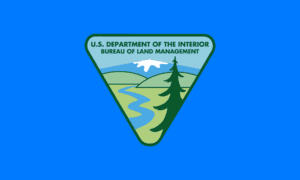
A federal grant of $3.25 million announced on Sept. 16 is expected to be used improve the ecosystem health and Pacific salmon resiliency in the Yukon, Kuskokwim and Norton Sound regions of Alaska, according to the Bureau of Land Management.
Project work under the new agreement was estimated to begin in early September 2024 and continue through the end of summer 2029, the BLM said.
The funds implement, through a partner award, part of the $36 million in Bipartisan Infrastructure Law funding dedicated to the Interior Department’s ‘Gravel to Gravel’ initiative. The project work, implemented in partnership with the Salcha-Delta Soil and Water Conservation District under the Good Neighbor Authority, includes efforts to restore areas impacted by historic land uses.
The Good Neighbor Authority itself allows the U.S. Forest Service and BLM to authorize states, counties and federally recognized Native tribes to conduct certain projects on federal lands in pursuit of specified land management goals.
BLM’s current restoration focus has been within the Birch, Beaver Creek and Fortymile Wild and Scenic River systems, rivers which are — or were historically — habitat for salmon. The additional investment supports expanded restoration and resiliency efforts beyond these Interior Alaska river systems to areas located throughout the Keystone Initiative region.
Future work is expected in more remote areas of the Keystone Initiative region, including the Salmon River near the community of Platinum.
The BLM’s focus remains on the expansion of stream habitat assessments across the entire Yukon, Kuskokwim, and Norton Sound regions to create a network of hundreds of permanent monitoring sites. The information gathered is expected to inform restoration plans and serve as long-term habitat monitoring sites across the region to improve our understanding of climate-driven change.
Near-term efforts continue to focus on the headwaters of salmon-bearing rivers along the road system, allowing the BLM and partners to intensively monitor and refine restorative techniques while minimizing overall costs.
The data-driven adaptive management approach helps to guide the strategies and techniques used on more remote restoration projects to help maximize restoration and resiliency results, according to BLM.
